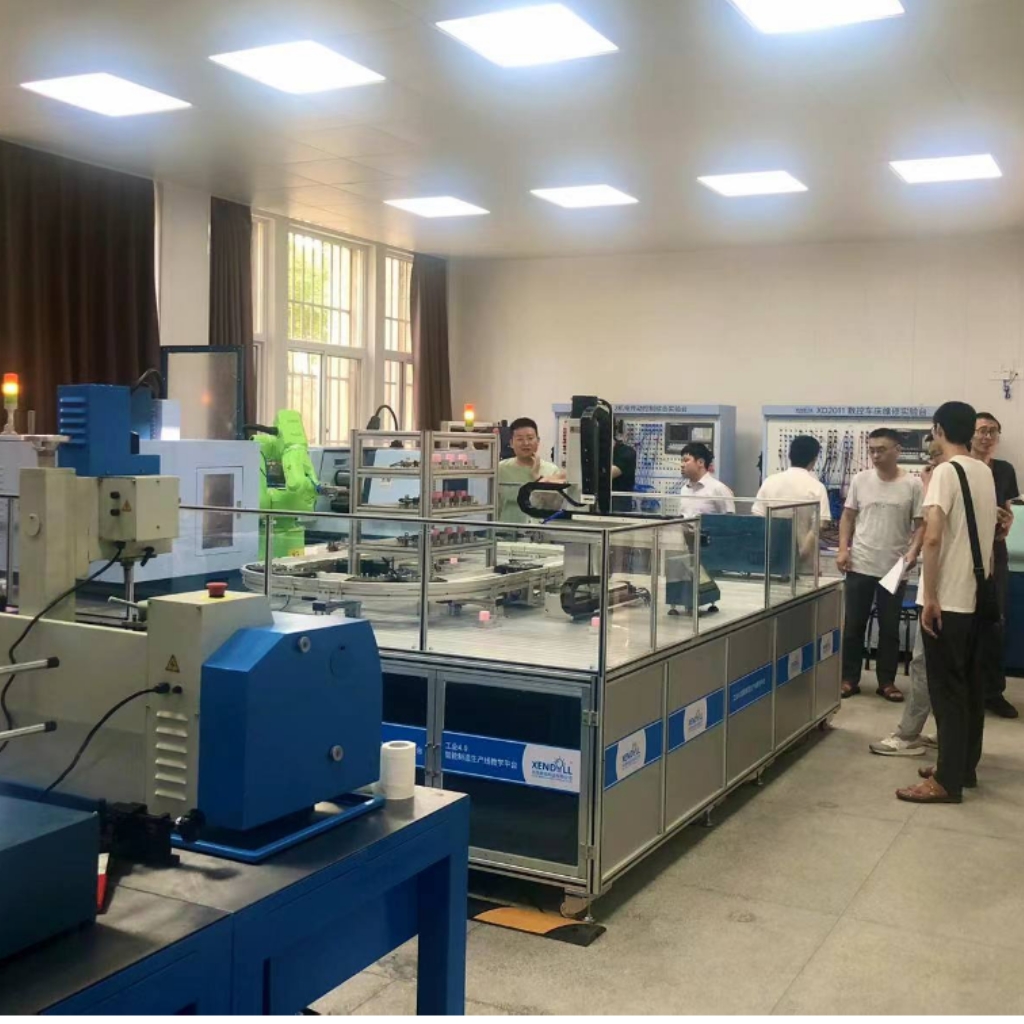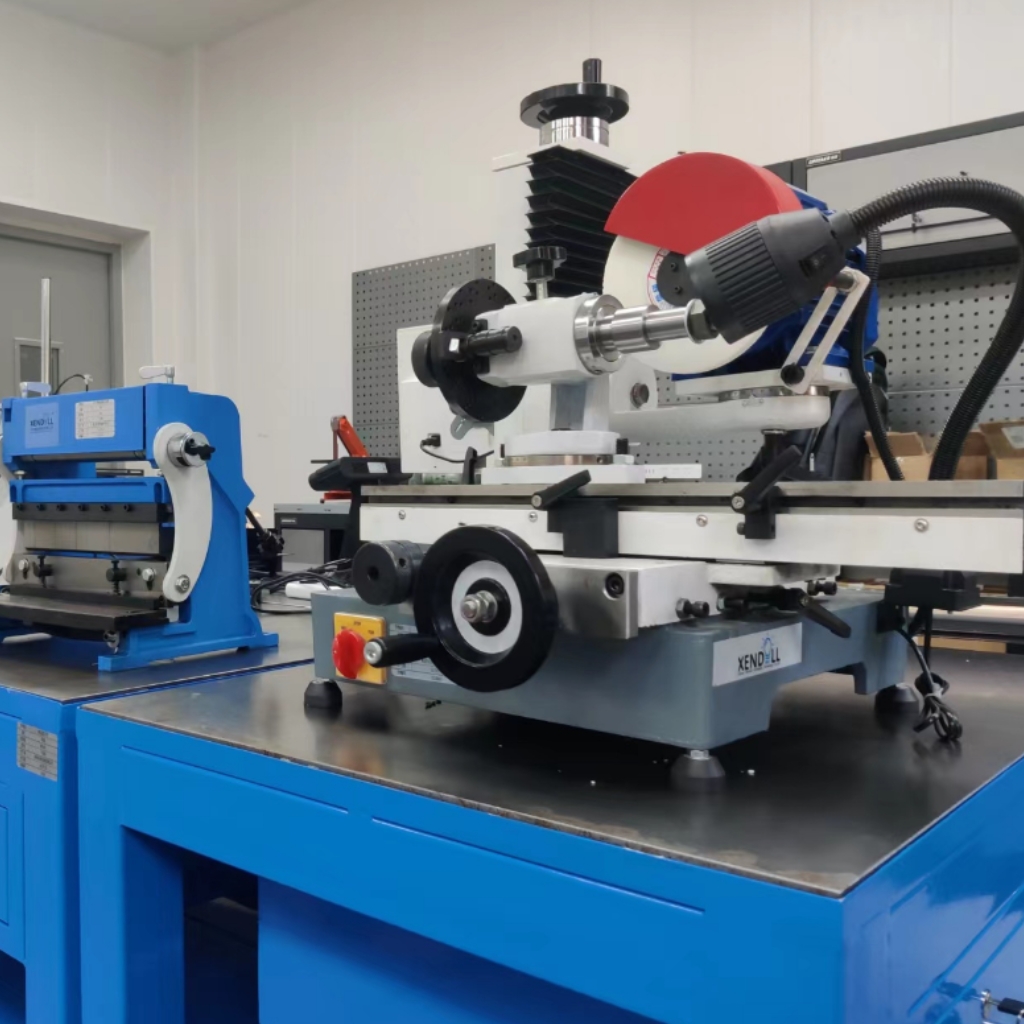Blog
Xendoll has 22 years of experience in the production of small machine tools. We will help you choose the suitable machine and share our experience in CNC machining with you.
 Jul 06, 2025
Jul 06, 2025

 816
816
The short, confident answer is yes, machining a precise and functional worm shaft is absolutely achievable on a modern CNC lathe. While requiring specific techniques and attention to detail, CNC lathes offer the precision, programmability, and rigidity needed to tackle this essential power transmission component. For businesses and enthusiasts equipped with capable machines like the Xendoll Mini Lathe, producing custom or replacement worm shafts becomes a viable in-house operation.

Why CNC Lathes Excel at Worm Shaft Machining
Unlike simple cylindrical turning, worm shafts demand precise helical grooves (threads) with specific lead angles and profiles, often involving undercuts near shoulders. Here’s how CNC lathes meet these challenges head-on:
Unmatched Precision & Repeatability: CNC control guarantees exact replication of the complex helical path and tooth profile defined in the program, critical for proper meshing with the worm wheel and efficient power transfer.
Synchronized Axis Control: The fundamental requirement for machining any screw thread, including worm threads, is the perfect synchronization of the spindle rotation (C-axis) with the linear movement of the tool (Z-axis). CNC systems handle this complex interpolation flawlessly, ensuring accurate lead and profile.
Complex Profile Machining: Using precisely ground form tools or carefully programmed single-point threading cycles with multiple passes, CNC lathes can generate the exact involute or Archimedean profile required for the worm thread flanks.
Rigidity & Stability: Quality CNC lathes provide the necessary rigidity to handle the often-interrupted cuts encountered when starting the thread near a shoulder or machining deep threads without excessive vibration, preserving surface finish and dimensional accuracy.
Advanced Toolpath Control: Features like constant surface speed (CSS) and programmable feed rates ensure optimal cutting conditions throughout the entire thread length, even as the diameter changes. Pecking cycles can efficiently manage chip evacuation in deep grooves.
Key Considerations for Successful Worm Shaft Machining on a CNC Lathe
Achieving a high-quality worm shaft involves more than just running a standard threading cycle. Pay close attention to these crucial aspects:
Tooling is Paramount:
Form Tools: Often preferred for efficiency and profile accuracy. These must be meticulously ground to match the exact worm profile (including pressure angle) and set perfectly perpendicular to the workpiece axis.
Single-Point Threading: Requires highly skilled programming to replicate the complex flank profile through multiple precisely controlled passes. Sharp, rigid tooling with the correct geometry is essential.
Rigidity & Setup: Minimize tool overhang. Ensure the workpiece is securely chucked and supported, potentially using a tailstock center for longer shafts to combat deflection during cutting forces.
Mastering the Program:
Accurate Lead Calculation: The program must reflect the exact lead of the worm thread (distance the tool advances per spindle revolution).
Threading Cycle Selection: Utilize the lathe's specific threading cycles (e.g., G76 on Fanuc-based controls). These cycles manage the complex in-feed patterns required for optimal chip control and surface finish.
Multi-Pass Strategy: Deep worm threads require multiple, progressively deeper passes. Program the depth of cut and number of passes carefully to manage tool load and prevent chatter.
Lead Angle Compensation: For multi-start worms or very high lead angles, compensation for the tool's entry angle might be necessary to maintain the correct flank profile.
Workpiece & Setup:
Material Selection: Choose materials suitable for hardening and wear resistance typical of worm gears (e.g., case-hardening steels like 8620 or through-hardening steels like 4140). Consider machinability.
Secure Chucking: Prevent slippage or vibration. Use collets for high concentricity if possible. Support long shafts adequately with a tailstock or steady rest.
Pre-Machining: Ensure the blank diameter is uniform and concentric before starting the thread. Machine any necessary undercuts before threading the worm section.
Quality Control:
Critical Dimensions: Precisely measure major diameter, minor diameter, and pitch diameter (often using thread wires or a specialized thread micrometer).
Lead Accuracy: Verify the lead using a precision lead checker or by measuring the distance traveled over a specific number of thread turns.
Surface Finish: A smooth surface finish on the thread flanks is vital for low friction and wear. Inspect visually and with surface roughness testers if available.
Profile Verification: Use optical comparators or specialized thread profile gauges to check the accuracy of the tooth form against the specification.

Conclusion: Precision Worm Shafts Are Within Reach
Machining a worm shaft on a CNC lathe is not only feasible but also a highly practical solution for producing high-quality, custom, or replacement components. By leveraging the precision synchronization, programmability, and rigidity of modern CNC lathes, and adhering to best practices in tooling selection, programming, setup, and quality control, complex worm geometries can be mastered. Xendoll Mini Lathes, designed for demanding precision tasks, provide hobbyists, educators, and small workshops with the capable platform needed to venture into projects like worm shaft machining, empowering innovation and self-sufficiency in gear production.



 Show all our samples
Show all our samples
 Provide you with a free quote
Provide you with a free quote
 Answer all the questions you may have
Answer all the questions you may have
 Guided installation and other options
Guided installation and other options